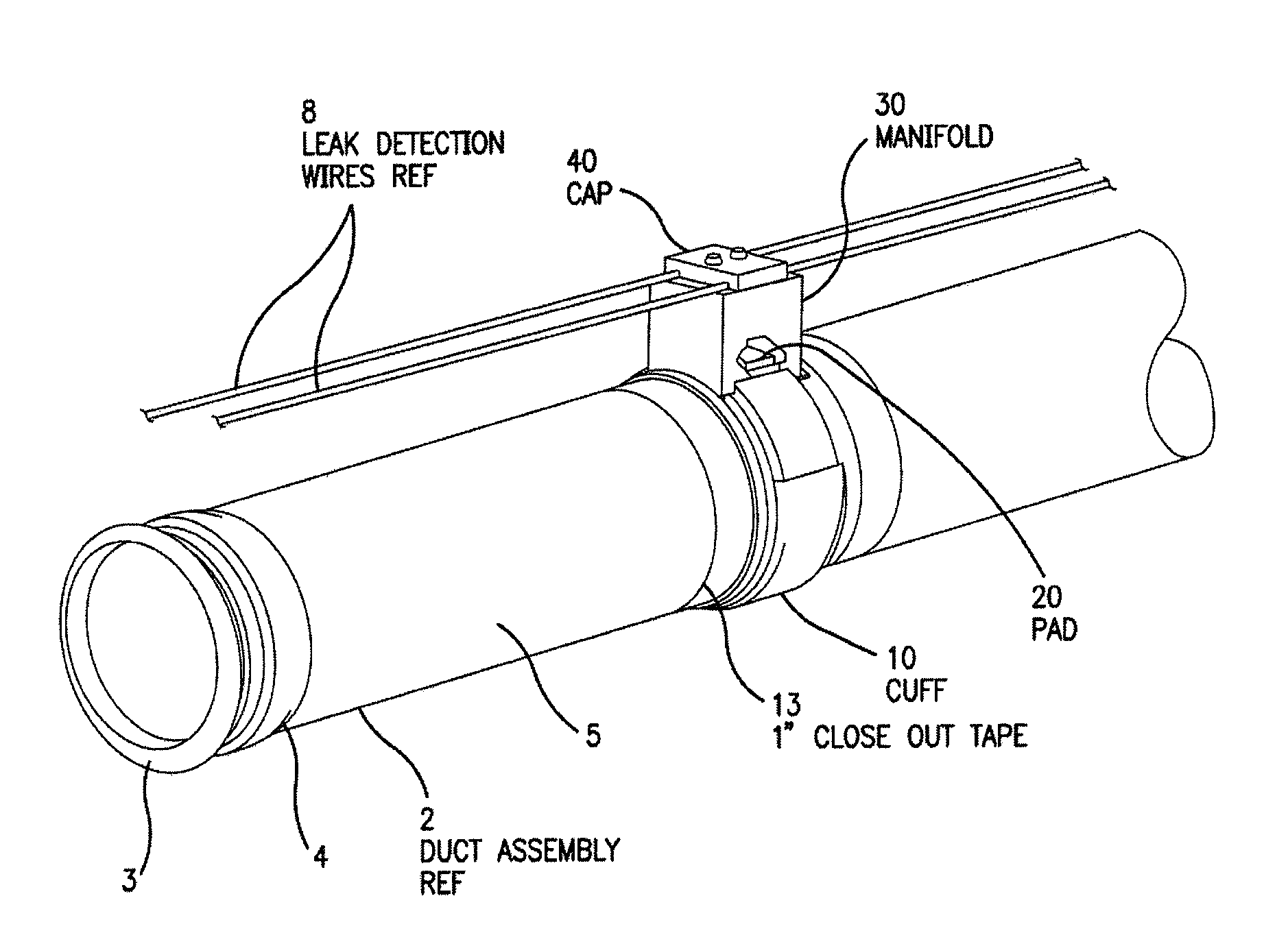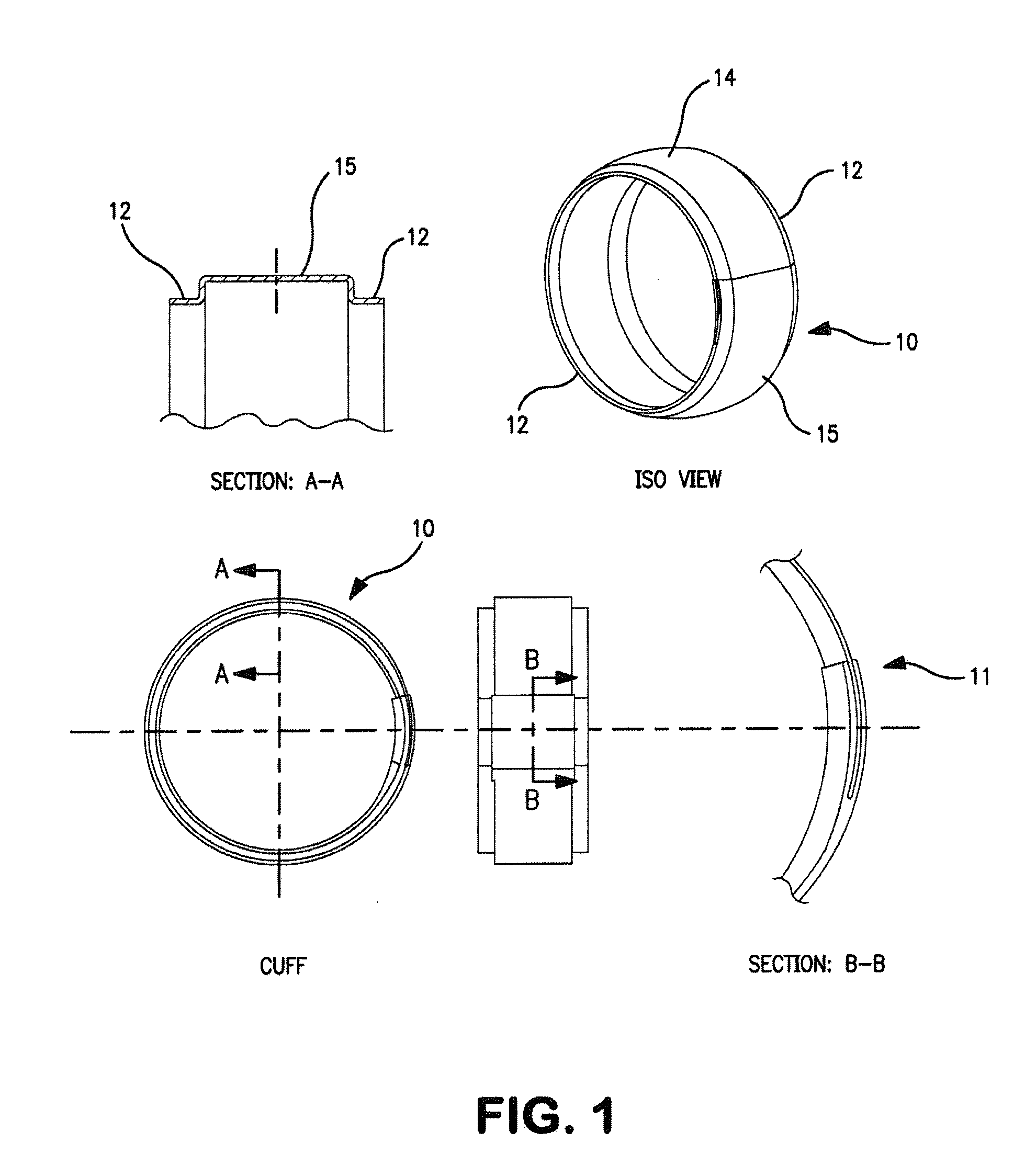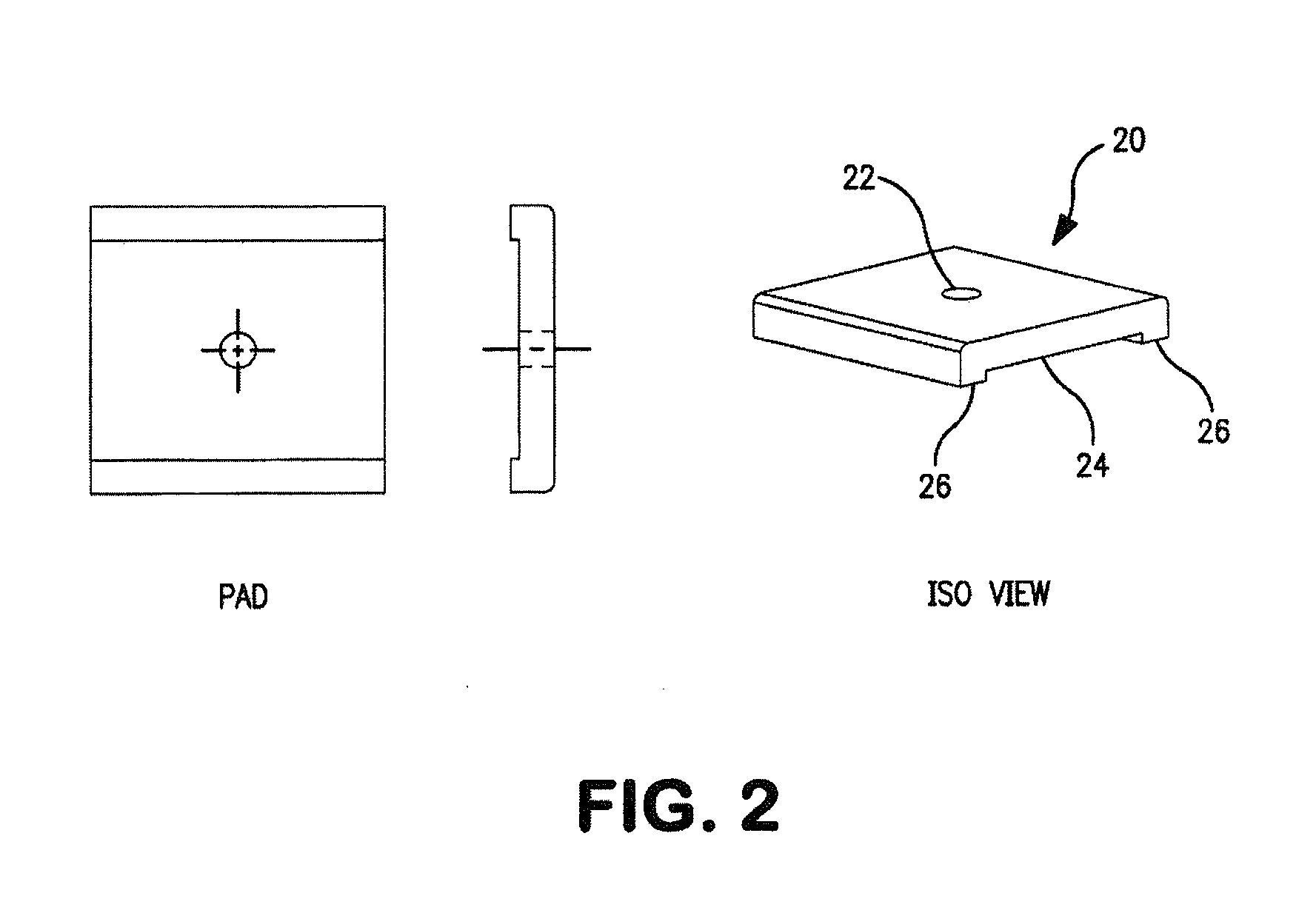Joint Cover with Manifold for Duct Leak Detection System
a duct leak detection and joint cover technology, applied in the aerospace field, can solve the problems of hot air leakage from the duct interior to the insulation blanket, and the air flow cannot be sustained,
- Summary
- Abstract
- Description
- Claims
- Application Information
AI Technical Summary
Benefits of technology
Problems solved by technology
Method used
Image
Examples
Embodiment Construction
[0037]While this invention is susceptible of embodiment in many different forms, there are shown in the drawings and will herein be described in detail, several embodiments with the understanding that the present disclosure should be considered as an exemplification of the principles of the invention and is not intended to limit the invention to the embodiments so illustrated. Further, to the extend that any numerical values or other specifics of materials, etc., are provided herein, they are to be construed as exemplifications of the inventions herein, and the inventions are not to be considered as limited thereby.
[0038]A typical duct assembly 2 of the type with which the invention is intended to be used is shown in FIG. 6 and comprises an inner metal duct 3, typically composed of steel and 1.00″ to 6.50″ in diameter, covered by insulation blanket 4, and secured by outer insulation shell 5. Insulation blanket 4 and outer insulation shell 5 are composed of materials as previously di...
PUM
 Login to View More
Login to View More Abstract
Description
Claims
Application Information
 Login to View More
Login to View More - R&D
- Intellectual Property
- Life Sciences
- Materials
- Tech Scout
- Unparalleled Data Quality
- Higher Quality Content
- 60% Fewer Hallucinations
Browse by: Latest US Patents, China's latest patents, Technical Efficacy Thesaurus, Application Domain, Technology Topic, Popular Technical Reports.
© 2025 PatSnap. All rights reserved.Legal|Privacy policy|Modern Slavery Act Transparency Statement|Sitemap|About US| Contact US: help@patsnap.com



